Great Design Plant: Roselle Tantalizes With Beauty and Flavor
http://decor-ideas.org 11/12/2013 13:50 Decor Ideas
I think it's high time we brought back this old-fashioned dooryard fruit. Well, it isn't technically a fruit, but rather the bright red calyx formed around a seedpod — and unlike other real fruits, roselle is an annual and has to be planted again each spring. It's really more of a sweet vegetable than a fruit.
But don't get bogged down by those details. These hibiscus plants flower in late summer into fall and are a heck of a lot more attractive than tomato and pepper plants (which also have to be planted each year), and their tart and exotic looking calyxes are delicious and useful in the kitchen.
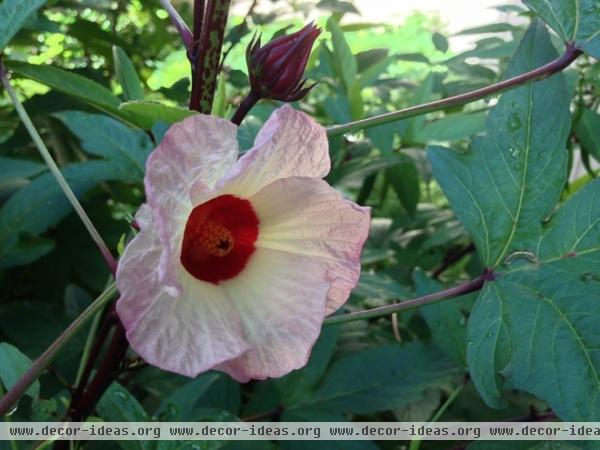
Botanical name: Hibiscus sabdariffa
Common names: Roselle, hibiscus, Jamaica sorrel, Florida Cranberry
Where it will grow: Annual — grow as you would tomatoes
Water requirement: Drought tolerant once established but benefits from moisture
Light requirement: Full sun
Mature size: 7 feet tall and 5 feet wide
Seasonal interest: Attractive broad leaves and red stems year-round; flowers and fruits from late summer to fall
When to plant: In spring after the last frost
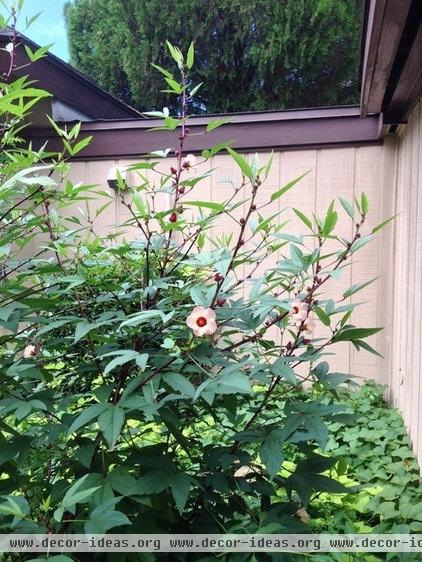
Distinguishing traits. So, why bother with a fruit imposter that has to be planted anew each year?
First, ignore the potential for fabulous flavor and focus on the foliage. You'd be hard pressed to find such a dramatic and leafy tropical for a temperate garden, thanks to roselle's dramatic upright habit, dark and glossy palmate leaves, and bold mahogany-red stems.
Castor bean plants (Ricinus communis, annual) have long been grown to achieve a tropical look in the garden despite the fact that they're poisonous, but roselle is so safe as to be edible and has a very similar tropical effect in the landscape.
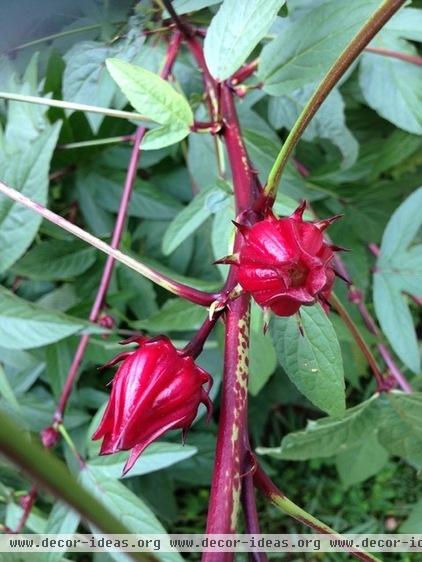
How to use it. Roselle is also very tasty and can be enjoyed in a multitude of ways. The calyxes surrounding the seed pod can be eaten right off the plant as a refreshing treat, or you can bring them to the kitchen for all sorts of fun.
The calyxes can be dried to make a tea similar to the Red Zinger tea sold in stores, which is made from roselle. If you can bring yourself to forgo eating them fresh, you can also make some delicious syrups and preserves, thanks to the calxes' flavor and high pectin content.
You can even make a Florida cranberry sauce for family gatherings by simmering three cups of the calyxes along with 1½ cup of sugar and a cup of water until dissolved.
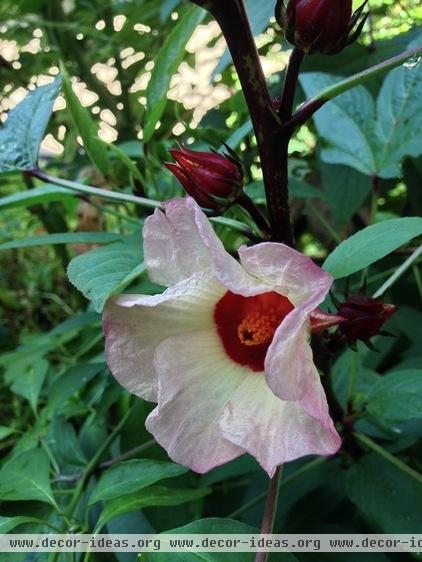
And then, of course, there are the flowers, yet another reason for you to give roselle a shot even if your climate is too cold for a big harvest.
Just think about it for a bit. Rather than buying an expensive hibiscus plant from the nursery that will inevitably die in winter, you can have a tower of exquisitely delicate peach-colored flowers in late summer, all from a single seed.
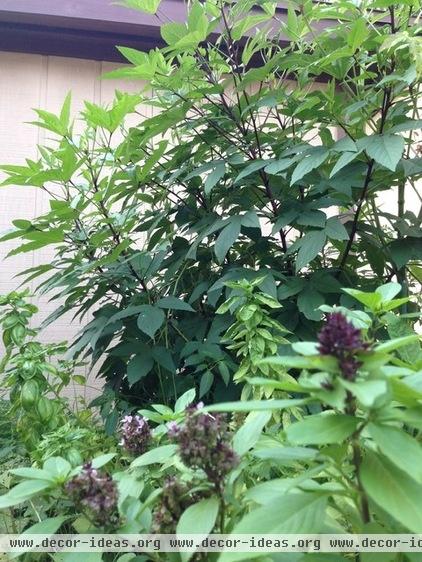
Planting notes. Plant roselle in April or May (regardless of climate), but be sure to give this vigorous plant a lot of room and maybe even a little support, since the branches may split at the base when they're weighed down by a heavy crop.
Stakes or cages should help. When the plant reaches 1 to 2 feet tall, prune the tips of each stem to encourage a fuller and stronger plant.
Fertilizer isn't necessary, but a small application may help if your soil is poor. Don't apply more than half of the usual amount, though, since it could delay flowering. Besides, roselle does just fine without any help.
Just to give you an idea of how huge it can become with minimal care, the roselle plant pictured here started from a single seed and was never once fertilized. The only irrigation it received in addition to natural Florida rainfall was an occasional watering by hose on the weeks it didn't rain — yet it became so prolific that most of the branches collapsed in a rain shower recently, splitting at the base. Strangely enough, the branches continued to bloom and fruit as though nothing had happened at all.
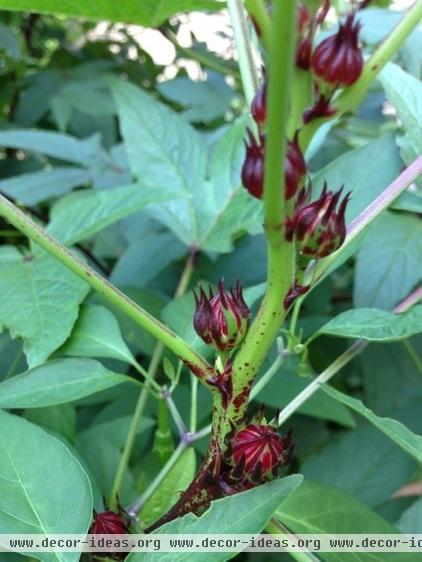
Harvest. Roselle plants begin blooming when the days become shorter and will begin fruiting earlier in temperate areas where the days are shorter, yet not all gardeners will have a harvest by the first frost. To remedy this, prune back the plants once they've reached 1 to 2 feet tall, use less fertilizer or choose an early-blooming variety, such as 'Thai Red' (Hibiscus sabdariffa 'Thai Red', annual).
The calyxes may be harvested and enjoyed before the flowers even open, but if you leave them to bloom and mature for a few days, you'll be rewarded with larger, juicier and tastier Florida cranberries that signal their ripeness by their slight parting, revealing the seedpod inside.
Pick them at this stage with scissors or pruners before they become hard and woody. To remove the seedpods, use either a hollow steel tube like the ones used to remove strawberry tops, or a knife.
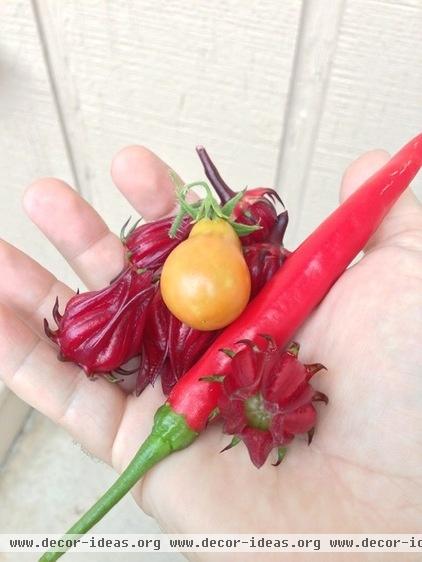
Here's a photo of some freshly harvested roselle calyxes that have begun parting to reveal the seed pod within. I've included a yellow pear tomato (Lycopersicon lycopersicum 'Yellow Pear', annual) and a cayenne pepper (Capiscum annum CV 'Long Slim Cayenne', annual) in my photo just to show how easy this plant is to grow in the summer garden. Plant roselle just as you would plant peppers or tomatoes — with plenty of room — and expect a big harvest of Florida cranberries.
Related Articles Recommended












